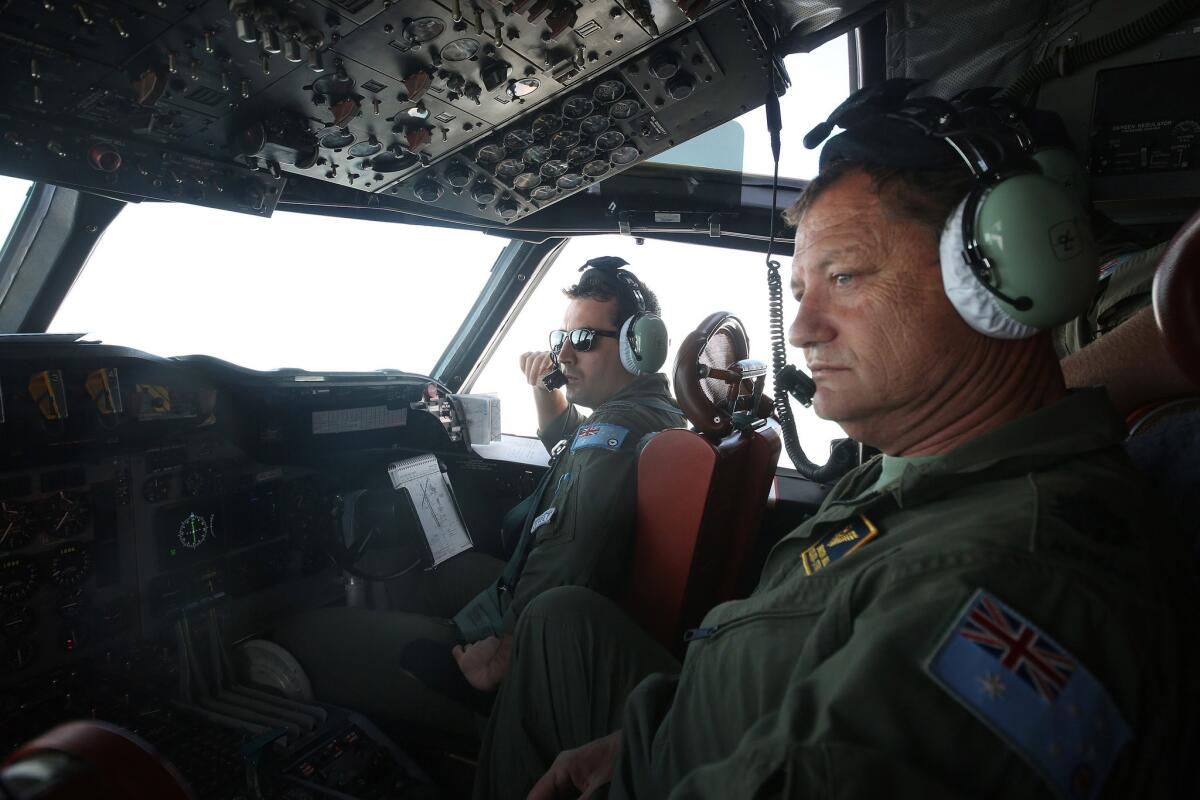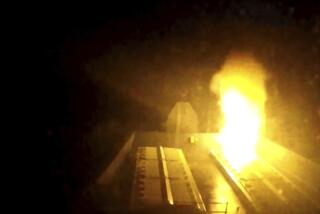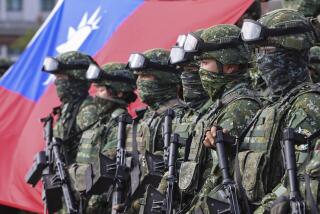Malaysia Airlines Flight 370: Why aren’t drones helping the search?

- Share via
A fleet of navy ships and advanced search aircraft from 26 nations have been scouring vast expanses of the Indian Ocean, looking for seat cushions, door panels or aluminum that might help solve the mystery of Malaysia Airlines Flight 370.
But noticeably absent from the search has been the unmanned technology that has become a centerpiece of the Obama administration’s national security strategy and defined 21st century warfare.
Drones, which are relied on to hunt and destroy targets in the Middle East and Central Asia, aren’t capable of looking for the missing Boeing 777, military officials said. Their high-tech cameras and sensors are better suited for missions over land. Searching over water is difficult because waves can reflect radar and render many other sensors useless.
PHOTOS: Malaysia Airlines plane missing
Some drones, like the MQ-1 Predator and MQ-9 Reaper, have been outfitted with laser-guided bombs or missiles -- grabbing most of the headlines. But all drones are equipped with cameras and heat-seeking sensors for reconnaissance and surveillance work.
Drones have helped measure radiation during Japan’s nuclear reactor meltdown, penetrated the eyes of hurricanes to gather scientific data and helped firefighters see hot spots during wildfires.
The most advanced technology is on the RQ-4 Global Hawk, a long-endurance, high-altitude spy drone that can fly at more than 60,000 feet. The plane, which is flown remotely, can stay aloft for 30 hours at a time.
A Navy variant of the drone, the MQ-4 Triton, has a price tag of $189 million. But the Navy said it’s not yet ready for use.
In the search for the missing Malaysia Airlines plane, which was carrying 239 passengers and crew members when it disappeared March 8, the Navy is relying on a pair of submarine-hunting aircraft that fly for nine hours at a time.
The P-8 Poseidon, the Navy’s newest submarine-hunting aircraft, is made by Boeing Co. The P-3 Orion is also in the region. The P-3 is a four-engine turboprop patrol aircraft made by Lockheed Martin Corp. and has been flying with the Navy since 1962.
The Navy said the P-3 costs $76,840 each day it’s used. The P-8 costs $42,740.
The planes are outfitted with advanced radar and electronic signal sensors to identify, find and track surface targets. They can also drop sonar systems that send back signals indicating what’s below the surface of the water.
Aircraft have been combing a large area about 1,500 miles off the coast of Perth, Australia, for two days without success.
Twitter: @wjhenn
More to Read
Sign up for Essential California
The most important California stories and recommendations in your inbox every morning.
You may occasionally receive promotional content from the Los Angeles Times.










